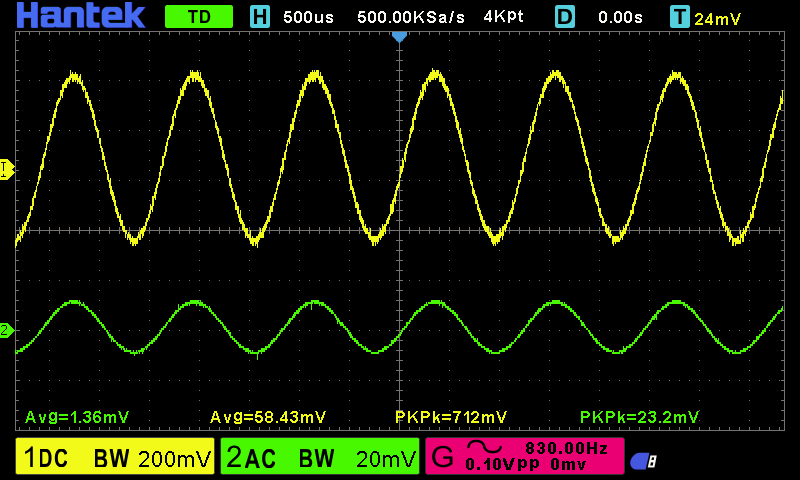Here we have a revolutionary approach to electret (3 pin) mic preamp.

In my years as engineering student I was a friend, also student of electronics, who has a dream of become a filmaker. He was a very smart person and good for math, but in the end he fell off to the temptation of pursue her dreams (Personally I think he take the best choice ever).
As consequence of its elections in life, he face 2 consequences:
- he has in poor economic shape.
- he need expensive hardware.
Because he is my friend and I am engineer, started to think how help and audio is a fundamental part of good quality films, extremely expensive but at the same time DIY friendly.
So become evident to me that making a good microphone with near professional quality is not only possible but really cheap. so I started experimenting with the obvious choice of electrets and this post is the result of such work.
On of the worst problems of electret microphones is the saturation and posterior distortion of the internal Jfet transistor, this design choice common to all cheap two pin electret microphones exclude his use as near-field/high SPL usage.
To remediate this issue some approaches are given, for example here and here. But all of this approaches sacrifice low level performance as those methods lower the gain of the internal Jfet thus increasing noise and do little to nothing diminishing the distortion, given the limited gain available.
To address those concerns in an elegant way one must apply some external gain to the feedback loop, leaving the internal Jfet it’s ability to amplify (thus reducing overall noise).
The design sown is like a OPAMP version of the well known cascode circuit, with the opamp giving low impedance to one side (close to zero) and high voltage gain, the same we get with the high side cascode transistor but much better.

If the constructor wants to lessen further the distortion can take feedback after the output decoupling capacitor, the penalty associated is an increase on her value to accommodate the low impedance of the feedback network, and a negligible DC present at the output (milivolts at much).
Another improvement is the addition of output voltage limiter in a form of two identical diodes in parallel with the feedback resistor which protects the whole system from leaving closed loop in case of an input overload. Using leds for this purpose provides visual feedback of the overloading condition, white/blue leds gives approx 8vpp of excursion.
Gain can be reduced if needed but keep an eye on stability, the 2k2 resistor can be reduced to 1k at least. reducing it furthermore implies the use of compensation capacitor on respective pins of the NE5534 or increasing 22pf feedback capacitor at expense of less loop gain and also possibly less frequency response.
To further reduce the distortion and make a negligible improve in noise performance, the use of AD797 is recommended. AD797 gives also a lot of flexibility on compensation to lessen further distortion.
Because of the topology of this circuit the Jfet has a negligible voltage excursion on his gate-source junction, working with such small excursions (obtained on purpose with the application of feedback on the source terminal) eliminate the distortion associated with his quadratic transfer function.
The only source of distortion left its the capsule itself, which has his limits as any other transducer but is much better handling high SPL than the internal jfet on his typical open loop configuration.
To manage high SPL or high amplitude transients and better low frequency response the obvious choice is going for a dynamic mic or a combination of both (dynamic+electret) but it will be in the next post.

The real word tests show what theory predicts: high SPL handling and astonishing low distortion for a cheap electret mic. Pushing the mic to the limit gives a soft, symmetrical saturation characteristic compatible with transducer saturation.
One last word about this circuit and its measure: connecting a signal generator (10mV- 100mV) between the ground and the capsule of electret microphone permit the use of a signal generator as the input for the circuit instead of using audio, because on a silent room the capsule acts as a decoupling capacitor.

Leave a comment